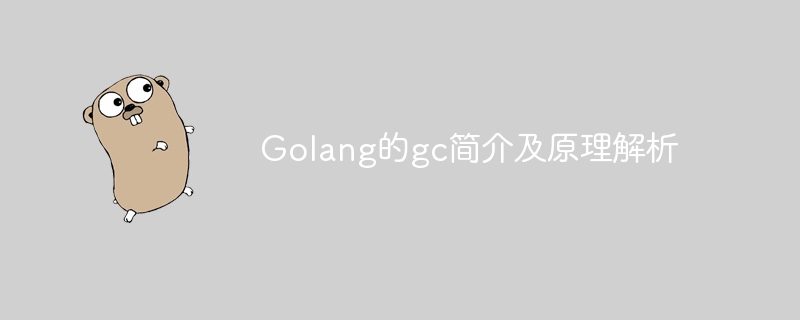

Title: Golang’s GC introduction and principle analysis
Golang (Go language), as an open source programming language developed by Google, has always been known for its efficient concurrency model and fast compilation speed have received widespread attention. Among them, Garbage Collection (GC) is a major feature of Golang. By automatically managing memory, it avoids many problems caused by developers' manual memory management. This article will briefly introduce Golang's garbage collection mechanism, while also deeply analyzing its principles and giving specific code examples.
The garbage collection mechanism in Golang adopts the mark-sweep algorithm, which is mainly divided into two stages: the marking stage and the clearing stage. In the marking phase, the system will mark all surviving objects; in the clearing phase, the system will clear all unmarked objects and release the memory space they occupy. The process is automated and the programmer does not need to do manual memory management.
Golang’s GC mainly identifies and processes garbage objects in three ways:
The following is a simple code example to demonstrate Golang’s garbage collection process:
package main import ( "fmt" "runtime" ) func main() { var a []int for i := 0; i < 1000000; i++ { a = append(a, i) } fmt.Println("Number of Goroutines before GC:", runtime.NumGoroutine()) runtime.GC() fmt.Println("Number of Goroutines after GC:", runtime.NumGoroutine()) }
In this example, we create a Contain a slice of 1 million integers, and then callruntime.GC()to manually trigger garbage collection. By printingruntime.NumGoroutine()you can observe the change in the number of Goroutines before and after GC execution.
In general, Golang’s garbage collection mechanism effectively simplifies the complexity of memory management, allowing developers to focus more on writing business logic rather than the details of memory management. . Through the introduction and examples of this article, I hope readers will have a clearer understanding of Golang's GC and be able to better utilize the garbage collection mechanism to improve program performance and maintainability.
The above is an article about the introduction and principle analysis of Golang's GC. I hope readers can gain some new knowledge from it.
The above is the detailed content of Golang's gc introduction and principle analysis. For more information, please follow other related articles on the PHP Chinese website!
 Usage of Type keyword in Go
Usage of Type keyword in Go How to implement linked list in go
How to implement linked list in go What are the Go language programming software?
What are the Go language programming software? How to learn go language from 0 basics
How to learn go language from 0 basics How to define variables in golang
How to define variables in golang What are the methods to implement operator overloading in Go language?
What are the methods to implement operator overloading in Go language? What are the operators in Go language?
What are the operators in Go language? What are the data conversion methods in golang?
What are the data conversion methods in golang?



